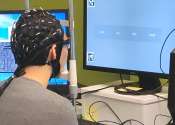Neural network reconstructs human thoughts from brain waves in real time
Researchers from Russian corporation Neurobotics and the Moscow Institute of Physics and Technology have found a way to visualize a person's brain activity as actual images mimicking what they observe in real time. This will ...
Oct 30, 2019
0
98758









